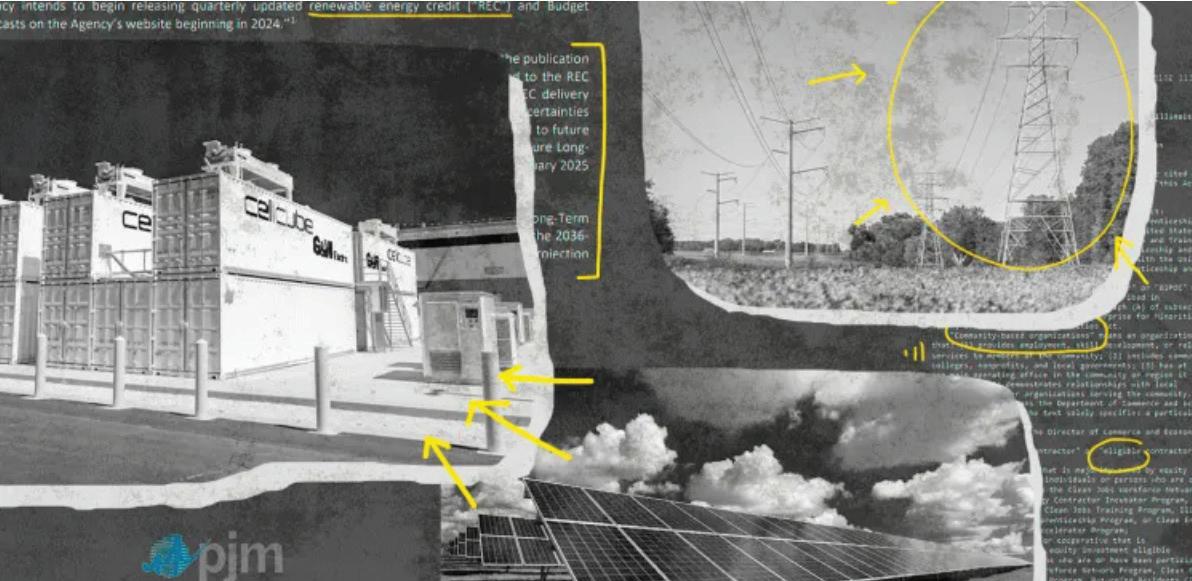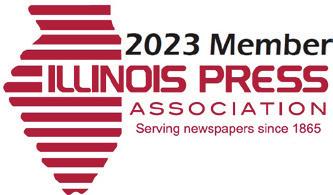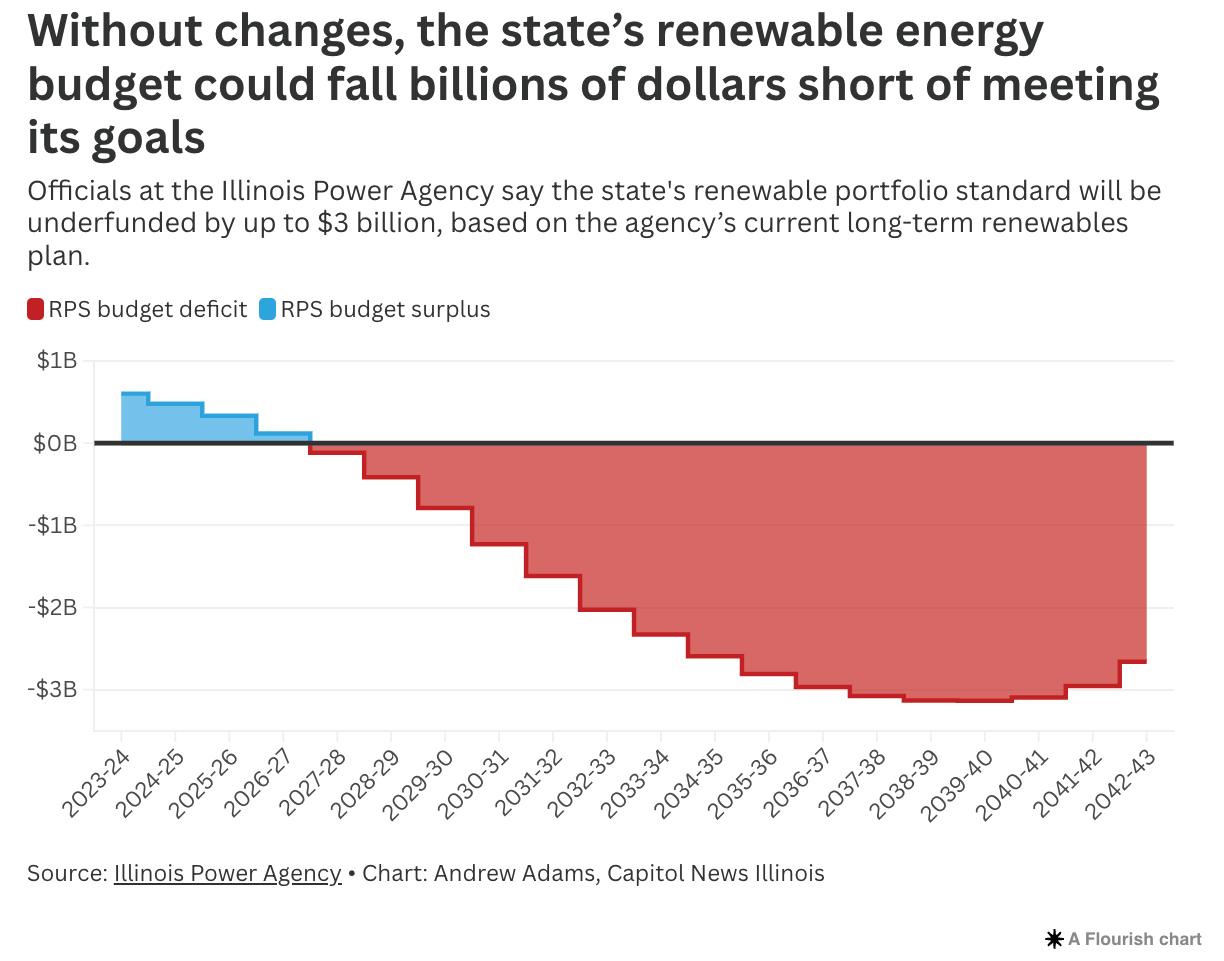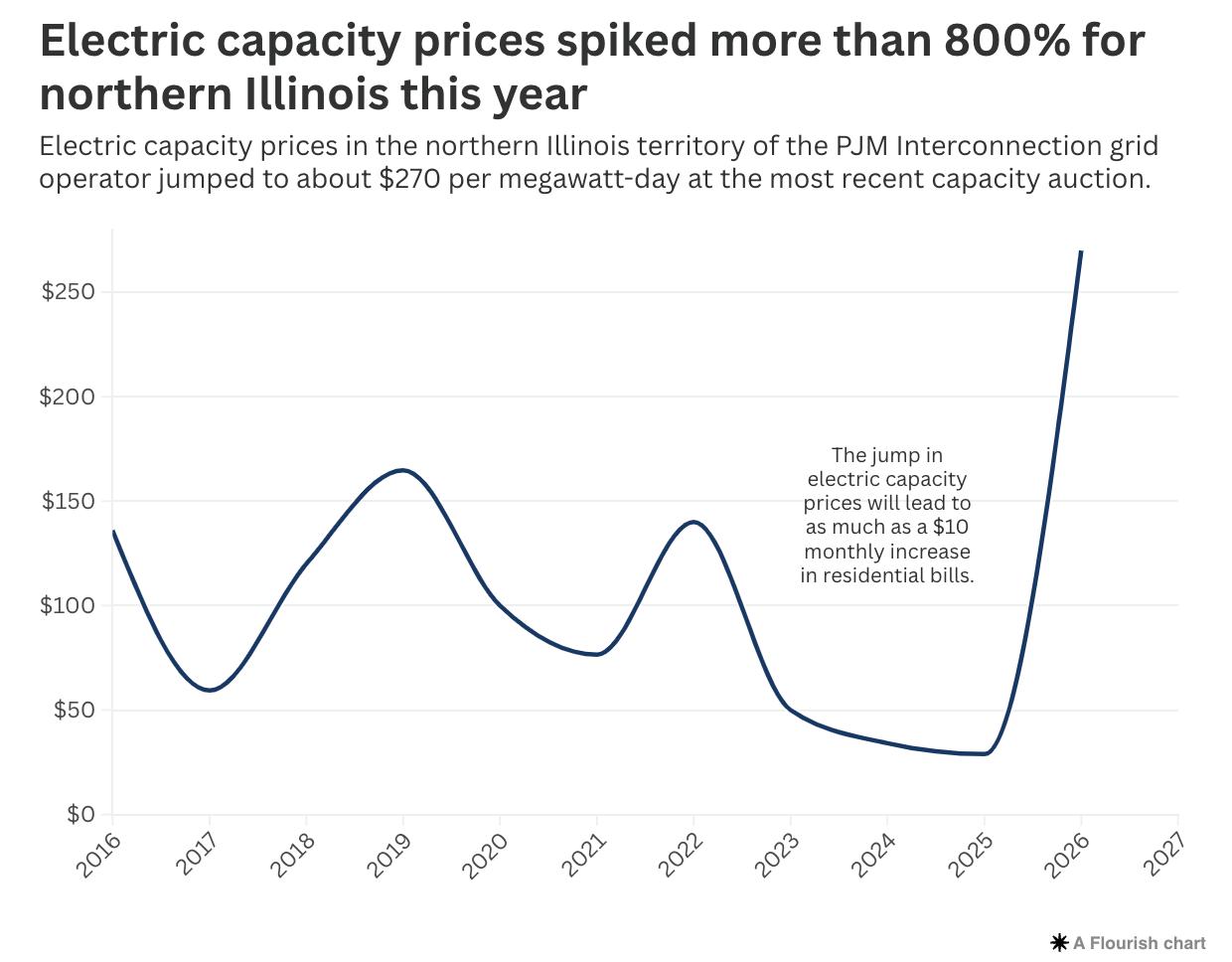

Budget Pressures
Could Impact K-12 Funding
State Board of Education gets briefing on fiscal landscape ahead
By PETER HANCOCK Capitol News Illinois
SPRINGFIELD – Public schools in Illinois have enjoyed several consecutive years of substantial increases in state funding, thanks largely to steady growth in state revenues and a new funding formula that lawmakers approved in 2018.
But whether that can continue into the upcoming fiscal year is an open question that state lawmakers will have to face when they return to the Statehouse in January.
With budget forecasters predicting flat revenue growth over the next year and continued demands for increased spending in other areas of the budget such as pension costs and health care, members of the Illinois State Board of Education were told Wednesday that they are now in a different fiscal environment.
“I do not envy anybody involved in that process because it won’t be a fun time,” Eric Noggle, revenue manager of the legislature’s Commission on Government Forecasting and Accountability, or COGFA, told the board.
COGFA is a nonpartisan agency that provides economic and budgetary analysis to the General Assembly. It operates independently of the Governor’s Office of Management and Budget, or GOMB, although the two agencies are often in agreement in their general findings and analysis.
vfpress.news

Worried About Grid Reliability, State Officials Seek To Boost Renewables, Energy Storage
Lawmakers
By ANDREW ADAMS Capitol News Illinois
When you flip the switch, the lights come on.
But in Illinois, after years of sweeping reforms to the energy industry and growing electricity demand, that premise is being questioned.
Several experts – including those involved in crafting the state’s energy reform, current and former regulators, and those in the renewable energy industry – are warning that prices will spike this summer and rolling blackouts could become necessary in the coming years. That is, unless
the state takes action to make sure enough electricity is available – in the right place and at the right times of day.
“If we don’t continue finding other ways of energy – making sure we can store it in some way – we’re going to see that supply and demand kind of thing,” Rep. Barbara Hernandez, an Aurora Democrat and sponsor of a bill to incentivize energy storage, told Capitol News Illinois. “We’ll see a lot of demand, but the supply will not be there and it’s going to create a lot of blackouts in our communities. But also, our families are going to be paying the price and we’re going to see an increase in utilities.”
Several factors contribute to the con-
cern over the grid’s future. A growing number of data centers in the U.S. and in Illinois are demanding massive amounts of energy. The state’s fossil fuel industry is – by design – in decline. And backlogs at regional grid operators have delayed renewable electricity generation from coming online.
The state also isn’t bringing renewable energy online quickly enough, according to a lead sponsor of the Climate and Equitable Jobs Act – Gov. JB Pritzker’s marquee climate legislation that seeks to decarbonize the state’s electric grid by 2045.
“We in Illinois are behind on our goals
PHOTOS BY ANDREW ADAMS AND AMERICAN PUBLIC POWER ASSOCIATION, USED UNDER UNSPLASH LICENSE
Capitol News Illinois illustration by Andrew Adams. Based on documents from PJM Interconnection, Illinois General Assembly and Illinois Power Agency.

Publisher/CEO
Michael Romain
Chief
Operations Officer Kamil Brady
Creative Designer Shanel Romain

HOW TO REACH US
John Wilk Communications, LLC
3013 S. Wolf Rd. #278
Westchester, IL 60154
PHONE: (708) 359-9148
VFPress.news
TWITTER: @VILLAGE_FREE
FACEBOOK: @MAYWOODNEWS

K-12 FUNDING A coming crunch?
from page 1
In November, GOMB issued a report projecting a $3.2 billion deficit in the fiscal year that begins July 1, 2025. That was based on projections of essentially flat revenue growth of about $53.4 billion, and a 6% increase in spending due to statutorily required increases in things like pension contributions, Medicaid and state employee health care costs, and PreK-12 education.
In the current fiscal year, state spending on public schools totals just under $11 billion, or about 20% of the state’s $53 billion General Revenue Fund Budget.
Two factors are primarily responsible for the demand for increased state spending on schools. One is the 2018 funding formula, known as the Evidence-Based Funding model, that calls for annual increases of at least $350 million.

ISBE board member Roger Eddy asks questions about the state’s PreK-12 education budget during a meeting Wednesday, Dec. 18, 2024.
The Village Free Press is published digitally and in print by John Wilk Communications LLC. The print edition is distributed across Proviso Township at no charge each week. © 2024 John Wilk Communication LLC

That law sets out a formula for determining what would be an “adequate” level of funding for each district based on factors such as total student enrollment, poverty rates, and the number of English language learners in the district. The adequacy target includes both state aid and money the district is able to raise on its own through local property taxes.
The law then directs that the new money each year be sent to districts that are furthest away from their adequacy target. The annual funding increases are supposed to continue until all districts reach at least 90% of their adequacy target.
But some advocates argue the state needs to increase its evidence-based funding by more than the minimum $350 million each year.
“One thing that we know is that three out of four children in Illinois are still in underfunded districts. That’s more than 1 million students,” Jelani Saadiq, director of government relations for the advocacy group Advance Illinois, told the board during the public comment portion of its meeting Wednesday. “The latest school report card shows continued challenges with chronic absenteeism and lagging recovery in math. We need to set our schools up for success in addressing these challenges in the absence of federal stimulus funds by doubling down on our EBF investment moving forward.”
The other factor driving increases in public school spending is known as “mandatory categorical” spending, or MCAT, which includes such things as transportation costs, the state’s free breakfast and lunch program and the cost of educating children in foster care.
Andy Krupin, ISBE’s director of funding and disbursements, explained that the state
often does not fully fund MCAT expenses and thus “prorates” the amount it reimburses districts for those expenses. The level of proration varies depending on how much the General Assembly appropriates in each category.
Based on the agency’s estimate of next year’s costs, Krupin said, the General Assembly would need to add another $142.2 million to its PreK-12 budget just to maintain the same level of proration as this year.
Combined with the $350 million increase called for under the EBF formula, that would be a total increase in PreK-12 spending of $492.2 million next year.
But ISBE has received requests for even more funding increases than that. During a series of public hearings on the budget in October, officials said, the agency heard numerous proposals adding up to about $2.2 billion in funding increase requests. Those included proposals for a $550 million increase in EBF funding and a $10 million increase in career and technical education funding, among other requests.
GOMB’s projection of a $3.2 billion deficit assumed a $444 million increase in school spending, as well as a $1.1 billion increase in health care expenses and a $437 million increase in pension contributions, among other increases.
State Superintendent of Education Tony Sanders is scheduled to submit his final budget proposal to the board for approval at the board’s Jan. 15 meeting. Pritzker is scheduled to deliver his budget address to the General Assembly Feb. 19.
Capitol News Illinois is a nonprofit, nonpartisan news service that distributes state government coverage to hundreds of news outlets statewide. It is funded primarily by the Illinois Press Foundation and the Robert R. McCormick Foundation.
CAPITOL NEWS ILLINOIS PHOTO BY PETER HANCOCK
Smell of Raw Cannabis Allows Police To Search a Vehicle
High court ruled earlier this year that the smell of burnt cannabis was not probable cause
By BEN SZALINSKI Capitol News Illinois
The smell of raw cannabis in a vehicle gives police probable cause to search it, the Illinois Supreme Court ruled earlier this month.
The ruling comes months after the court ruled the smell of burnt cannabis does not give police probable cause to search a vehicle, drawing a fine line for motorists and police to follow when evaluating legal possession of cannabis.
“The odor of burnt cannabis suggests prior or current cannabis use, and the odor of raw cannabis suggests that cannabis is currently possessed in the area where the odor is detected. Different laws are implicated based on those inferences,” Justice P. Scott Neville, a Democrat, wrote in the majority opinion.
The 4-2 ruling by the court, with Republican Justice Lisa Holder White abstaining, found that an Illinois State Police trooper conducted a legal search of a car in which Vincent Molina was a passenger in December 2020, after the driver was pulled over for speeding on Inter-
state 88 in Whiteside County.
According to court documents, the trooper said he smelled raw cannabis in the vehicle and initiated a search. The trooper then found multiple joints in a cardboard box in the car’s center console and cannabis in a sealed plastic container in the glove box. Molina was charged with a misdemeanor for illegal possession of cannabis.
A circuit court initially ruled in Molina’s favor, finding the search was unreasonable because Illinois law allows people over age 21 to possess recreational cannabis. But an appellate court and the Illinois Supreme Court disagreed with that ruling, citing the state’s laws for how cannabis should legally be possessed in a vehicle.
Illinois law requires cannabis to be in a “sealed, odor-proof, child-resistant cannabis container” when in a car and for it to be “reasonably inaccessible while the vehicle is moving.”
Neville wrote the trooper made a “reasonable inference” that the smell meant cannabis was illegally possessed.
“While cannabis is legal to possess generally, it is illegal to possess in a vehicle on an Illinois highway unless in an odor-proof container,” Neville wrote. “The odor of raw cannabis strongly suggests that the cannabis is not being possessed within the parameters of Illinois law. And, unlike the odor of burnt cannabis, the odor of raw cannabis coming from a vehicle reliably points to when, where, and how the cannabis is possessed — namely, currently, in the vehicle, and not in an odor-proof container.”
The Illinois Supreme Court unanimously ruled in September, with White abstaining, that the smell of burnt cannabis does not indicate a crime has been committed and does not give police probable cause to search a vehicle. Though a state trooper found a gram of cannabis in the car at the center of that case, the driver exhibited no signs of impairment, and the trooper should not have searched the vehicle, the court concluded in an opinion authored by Neville.
“It makes no sense to treat raw cannabis as more probative when the odor of burnt cannabis may suggest recent use, whereas the odor of
raw cannabis does not suggest consumption,” O’Brien wrote. “If the crime suggested by the odor of burnt cannabis is not sufficient for probable cause, then certainly the crime suggested by the odor of raw cannabis cannot be either.”
O’Brien, a former state lawmaker, noted it is legal to possess certain amounts of cannabis in Illinois.
“The result, whether intentional or not, is to continue to stigmatize the use of cannabis despite the legislative efforts to legalize the use of cannabis,” she wrote.
Supreme courts in other states have also issued rulings placing limits on when the smell of cannabis gives probable cause to police to search a vehicle.
Illinois lawmakers have also sought to enshrine limitations on vehicle searches based on the smell of cannabis into state law. The Senate passed a bill in 2023 that would prohibit police from searching a vehicle based on the smell of burnt or raw cannabis, but it stalled in the House pending resolution of the court cases.













Whether you’re an elite athlete or simply enjoy being active, Dr. Hur will accurately diagnose and treat your unique condition, helping relieve pain and restore function to your foot and ankle.
Areas of Expertise:
• Minimally invasive foot and ankle surgery
• Total ankle arthroplasty
• Deformity correction
• Sports-related injuries
• Fracture care

Schedule an appointment in Joliet, Westchester, or Chicago.
ENERGY
Storage concerns
for renewable generation,” Sen. Bill Cunningham, D-Chicago, told Capitol News Illinois.
Lawmakers, meanwhile, are hurriedly working to find solutions that could be rolled out quickly to keep electricity reliable and affordable.
A short lame-duck legislative session tentatively planned for Jan. 4-7 could become an energy policy battleground with long-term consequences. But the tight timeline could cause the legislative process to drag into Springfield’s regular session as a new General Assembly is sworn in on Jan. 8.
Illinois’ Renewable Energy Plan
In 2021, state lawmakers passed the Climate and Equitable Jobs Act, or CEJA, a sweeping regulatory reform that advocates hailed as a nation-leading effort to transition the state off fossil fuels while boosting the economy and protecting consumers.
But three years in, the state is struggling to keep up with its goals to bring new renewable energy online as fossil fuel plant owners reconsider their future in a state that’s looking to fully phase out carbon emissions by 2045.
Coal-fired electricity generation fell from 46% of the state’s portfolio in 2009 to 15% in 2023 due to tightening emissions regulations and economic pressures according to the U.S. Energy Information Administration. About one-third of the total drop in coal capacity occurred in 2022 alone.
Natural gas-powered generation increased over that period, reaching an all-time high last year, but those plants will also be subject to closure over the next two decades.
CEJA’s aim was to replace fossil fuels with renewables by incentivizing investment in wind and solar. But regulators now worry that the pool of money that funds that transition could soon fall short.
Illinois requires electric utilities to supply a minimum percentage of customer demand with renewable energy. The Illinois Power Agency purchases this electricity at “procurement events” using a complex system of financial instruments such as “renewable energy credits.” It tracks its progress through what’s known as the renewable portfolio standard, or RPS.
The RPS is funded by Illinois utility customers through a charge on their monthly bills. Utilities then use the money collected from this charge to purchase renewable energy credits.
The state’s next benchmark is to have 40% of electricity sales come from renewable sources by 2030. As of October, the RPS was less than halfway to meeting that mark, although there is still time for the state to back new developments to meet that goal.
IPA Director Brian Granahan said while the RPS’ funding is sufficient for now, it could fall short in the near future.
“We face substantial uncertainty past 2026,” Granahan told Capitol News Illinois.
The IPA’s most recent forecast shows the RPS facing a potential budget shortfall by mid-2027, based on its long-term renewable procurement plan. By 2039, the RPS has a projected budget shortfall of $3.13 billion dollars. This “uncertainty”
from page 1 See ENERGY on page 6

over the future of the RPS budget has several causes, including forecasted increases in the price of renewable energy credits. Increased demand for electricity also contributes to higher projected costs in the RPS budget.
Energy Storage
Illinois lawmakers, energy industry groups and consumer advocates are looking to address another well-established problem with renewable energy – its intermittent nature.
Because solar and wind generation cannot be turned on or off at times of high demand – like natural gas or coal plants – they often generate electricity at the “wrong” times of day. Solar, for example, stops generating electricity in the evening and at night, but the peak daily demand often comes as people return home from work.
“Not all megawatts are created equal,” Pruitt said. “A megawatt that’s delivered at 2 in the morning does not have the same value as a megawatt that’s delivered at 3 in the afternoon.”
One proposal would implement new incentives for building large-scale batteries at either the consumer or power plant scale to store electricity generated by renewables and make its availability more regular.
Bills from Cunningham and Hernandez would require state agencies to treat energy storage similarly to renewable energy. That includes authorizing the IPA to solicit energy storage developments and requiring the Illinois Commerce Commis-
sion and large utilities to develop plans for integrating storage into existing power systems.
Renewable energy groups and others interested in addressing climate change have urged quick action to prop up the nascent industry.
A study from Pruitt’s consulting firm – which was supported by several clean energy trade groups – found that “immediate action is required” to allow time for new energy storage to be built before existing power plants go dark over the next 20 years. That study also found that while there would be upfront costs for electric customers in the first few years, it would save money in the long term.
A Union of Concerned Scientists report from November recommended that Illinois act quickly to get at least 3,000 megawatts of storage online by 2030 to reduce the risk of forcing the state to import fossil fuel-generated energy from other states.
“Across all scenarios, Illinois requires substantial energy storage development to meet long-term CEJA decarbonization goals,” the report found.
Hernandez said she’d like to see such a bill move in the lame duck session. Cunningham echoed that sentiment but left the door open to the issue taking longer to resolve.
“It’s definitely something we’ll try to address in lame duck, but if not, it’s something that will be top of list in the regular session,” Cunningham said.
ENERGY
Big data
from page 5
Pritzker pumped the brakes on a lame duck energy package in mid-December, telling reporters there “isn’t currently some bill that’s being put together” that would address a broad range of energy issues.
But the governor did signal support for energy storage legislation and a spokesperson later clarified Pritzker is aware of a smaller bill that is likely to come up in January. “I think that would be an important topic for us to take up,” the governor said of battery storage.
Moving Electricity Around
The complex process of moving electricity from one place to another, and the federal regulators who coordinate that process, have also complicated CEJA’s rollout.
When electricity is needed, it must be moved from a power plant, solar farm or storage facility to its end user – like a household or factory. As new generation projects come online, new transmission lines must be built, like roads going to and from a freshly developed neighborhood.
Most grid operators face major backlogs for approving new generation projects. As of April, the two grid operators in Illinois –PJM Interconnection and the Midcontinent Independent System Operator – have almost 600 gigawatts of generation capacity waiting to go online, according to a report from Lawrence Berkeley National Laboratory. That’s roughly equivalent to 600 nuclear power plants. These backlogs are due to a surge in interconnection requests over the past 10 years, leading to a slowdown in regulatory approvals for necessarynfrastructure upgrades, including transmission lines.
Nationwide, generation projects that came online in 2023 averaged nearly five years waiting in the queue, up from three years in 2015 and less than two years in 2008, according to that report.
Clara Summers – who manages the “Consumers for Better Grid” campaign for the consumer advocacy group Citizens Utility Board – said PJM’s interconnection queue is “particularly egregious,” leading to problems with the local electricity market.
“The market can’t work if the interconnection queue doesn’t work and it hasn’t for a while,” Summers said of PJM, which serves northern Illinois and much of the eastern United States. “That’s something that just fundamentally needs to be fixed.”
Electricity generation developers respond-

ed in a 2024 survey published by Columbia University’s Center on Global Energy Policy that PJM’s interconnection process makes other stages of development challenging, such as sourcing materials and financing.
The report suggested that federal regulators adopt reforms to generation development to ease interconnection, ranging from making it easier for new projects to be built at the site of retiring plants to reducing the requirements placed on energy generation developers before they’re allowed to begin construction.
This problem reared its head over the summer when PJM held an auction to secure electric “capacity” for the upcoming year. These auctions are the mechanism by which grid operators ensure there is enough electricity generation to meet future demand.
That auction set the price for capacity at $269.92 per megawatt-day, twice the average over the past decade and more than 9 times higher than last year’s price. PJM projects the total cost to provide electricity for the 2025-2026 delivery year to be $14.7 billion, a $12.5 billion jump from last year and a 35% increase over the second-highest annual capacity price.
That means prices for customers will increase by between $7 and $10 for the average household in the Commonwealth Edison territory in northern Illinois, according to the Citizens Utility Board.
CUB, the Illinois Attorney General and the attorneys general of several other states argued in a November complaint to federal regulators that the auction was artificially
outlines several changes to transmission line regulation and incentives, though it’s unclear if facets of it would be included in any energy legislation that moves quickly.
“We can incentivize transmission development in the same way we incentivize renewables and dedicate a portion of everyone’s electric bill,” Cunningham said.
Data Centers And Demand
Illinois’ grid problems are also exacerbated by a growing demand for electricity.
In recent years data centers and largescale industrial and manufacturing development have boomed nationwide and especially in Illinois. Data centers, which are key for artificial intelligence development and other high-tech businesses, require massive amounts of electricity, as do manufacturing plants.
high because PJM undercounted how much electricity would be available in the future, among other reasons.
PJM has already filed rule changes for future auctions in response to that complaint and others. Advocates called the filing a “major win” for customers in PJM’s territory, though experts said the high prices still signify trouble for the grid.
The Midcontinent Independent System Operator, or MISO, operates the grid for much of the Midwest, including downstate Illinois. Earlier this month, it approved the next phase of its multi-year plan for longrange transmission lines. Those projects will cost an estimated $21.8 billion and will move electricity around the Midwest.
James Gignac, a senior policy manager at the Union of Concerned Scientists, said this model should be considered by other grid operators – including PJM – to increase transmission line construction and put cheaper and cleaner energy on the grid.
“The quicker that we can get these longrange projects approved and moving toward construction, the sooner we’ll have that increased capacity for projects to be able to access the grid more quickly and at a lower cost,” he said.
Several of the first round of MISO transmission line projects are currently under review at the Illinois Commerce Commission. While federal regulators limited states’ authority in long-term planning earlier this year, state regulators still play an important role in procedural approvals.
Cunningham filed a bill this spring that
Illinois has been competing to land data centers by providing tax incentives to build facilities here. Pritzker has said the data center tax credit helped move Illinois from “kind of middle of the pack to now becoming the thirdlargest data center market in the nation and the fifth-largest in the entire world.”
But data center developments are already increasing demand in northern Illinois and hastening the need for greater electricity generation.
A report from the consulting firm Grid Strategies found that that demand for electricity will increase by 15.8% over the next five years, about a five-fold increase over nationwide growth estimates from two years ago. PJM territory is expected to see some of the largest demand growth, driven in part by an “unprecedented” increase in data centers.
For drafters of CEJA, the level of demand growth was unexpected.
“We knew that demand would go up,” Cunningham said. “But the words ‘data center’ were never used in CEJA negotiations.”
The Columbia University study of PJM’s grid, meanwhile, recommended state-level changes to mitigate the risks of delays in getting renewable generation online as demand increases.
“State regulators and other policymakers will also be wise to manage the phaseout of existing resources carefully,” the report suggested. “One way of doing so is to build ‘reliability safety valves’ into environmentally driven retirement schedules.”
In Illinois, that could mean state lawmakers and regulators now face difficult choices on an increasingly short timeline: increase costs to customers, back down from the state’s most ambitious decarbonization goals or accept an increasingly unreliable grid.

IN THE CIRCUIT COURT OF COOK COUNTY, ILLINOIS COUNTY DEPARTMENTCHANCERY DIVISION CITIMORTGAGE, INC., Plaintiff, -v.ELIDIA R MARTINEZ AND RICARDO
MARTINEZ Defendants. 23-CH-03024
413 N. EAST END AVE, HILLSIDE, IL 60162
NOTICE OF SALE PUBLIC NOTICE
IS HEREBY GIVEN that pursuant to a Judgment of foreclosure and Sale entered in the above cause on 5/3/2024, an agent of Auction.com LLC will at 12:00 PM on January 29, 2025 located at 100 N LaSalle St., Suite 1400, Chicago, IL 60606, sell at public sale to the highest bidder, as set forth below, the following described real estate.
Commonly known as 413 N. EAST END AVE, HILLSIDE, IL 60162
Property Index No. 15-07-413-0090000 The real estate is improved with a Single Family Residence. The
judgment amount was $224,690.70 Sale Terms: 20% down of the highest bid by certified funds at the close of the sale payable to Auction.com LLC, No third party checks will be accepted. All registered bidders need to provide a photo ID in order to bid. The balance, in certified funds/or wire transfer, is due within twenty-four (24) hours. (relief fee not required) The subject property is subject to general real estate taxes, special assessments, or special taxes levied against said real estate and is offered for sale without any representation as to quality or quantity of title and without recourse to plaintiff and in “AS IS” condition. The sale is further subject to confirmation by the court. Upon payment in full of the amount bid, the purchaser will receive a certificate of sale that will entitle the purchaser to a deed to the real estate after confirmation of the sale.
The property will NOT be open for inspection and plaintiff makes no representation as to the condition of the property, prospective bidders are admonished to check the court file to
verify all information. If this property is a condominium unit, the purchaser of the unit at the foreclosure sale, other than a mortgagee, shall pay the assessments and the legal fees required by the Condominium property Act, 765 ILCS 605/9 (g)(l) and (g)(4). If this property is a condominium unit which is part of a common interest community, the purchaser of the unit at the foreclosure sale other than a mortgagee shall pay the assessments required by the Condominium Property Act, 765 ILCS 605/18.5(g-1).
IF YOU ARE THE MORTGAGOR (HOMEOWNER), YOU HAVE THE RIGHT TO REMAIN IN POSSESSION FOR 30 DAYS AFTER ENTRY OF AN ORDER OF POSSESSION, IN ACCORDANCE WITH SECTION 15-1701 (C) OF THE ILLINOIS MORTGAGE FORECLOSURE LAW.
For information, contact Plaintiffs attorney: Heavner, Beyers & Mihlar, LLC (217) 422-1719 please refer to file number 1674389. Auction.com LLC 100 N LaSalle St., Suite 1400, Chicago, IL 60606 - 872225-4985 You can also visit www.
auction.com.
Attorney File No. 1674389 Case Number: 23-CH-03024
NOTE: PURSUANT TO THE FAIR DEBT COLLECTION PRACTICES ACT, YOU ARE ADVISED THAT PLAINTIFF’S ATTORNEY IS DEEMED TO BE A DEBT COLLECTOR ATTEMPTING TO COLLECT A DEBT AND ANY INFORMATION OBTAINED WILL BE USED FOR THAT PURPOSE. I3255947
IN THE CIRCUIT COURT OF COOK COUNTY, ILLINOIS COUNTY DEPARTMENTCHANCERY DIVISION NATIONSTAR MORTGAGE LLC Plaintiff, -v.-
DENISE BANKS, UNKNOWN HEIRS AND LEGATEES OF CAROLINE BANKS, BANK OF AMERICA, NA, BERYL BANKS, WILLIAM BANKS, RANDOLPH BANKS, UNKNOWN OWNERS AND NONRECORD CLAIMANTS, GERALD NORDGREN, AS SPECIAL REPRESENTATIVE
FOR CAROLINE BANKS (DECEASED)
Defendants 2023 CH 07485 217 47TH AVE
BELLWOOD, IL 60104
NOTICE OF SALE
PUBLIC NOTICE IS HEREBY GIVEN that pursuant to a Judgment of Foreclosure and Sale entered in the above cause on July 5, 2024, an agent for The Judicial Sales Corporation, will at 10:30 AM on January 23, 2025, at The Judicial Sales Corporation, One South Wacker, 1st Floor Suite 35R, Chicago, IL, 60606, sell at a public sale to the highest bidder, as set forth below, the following described real estate:
Commonly known as 217 47TH AVE, BELLWOOD, IL 60104
Property Index No. 15-08-222-0130000
The real estate is improved with a single family residence.
Sale terms: 25% down of the highest bid by certified funds at the close of the sale payable to The Judicial Sales Corporation. No third party checks will be accepted. The balance, in certified funds/or wire transfer, is due within twenty-four (24) hours. The subject property is subject to general real estate taxes, special assessments, or special taxes levied against said real estate and is offered for sale without any representation as to quality or quantity of title and without recourse to Plaintiff and in “AS IS” condition. The sale is further subject to confirmation by the court.
Upon payment in full of the amount bid, the purchaser will receive a Certificate of Sale that will entitle the purchaser to a deed to the real estate after
confirmation of the sale. The property will NOT be open for inspection and plaintiff makes no representation as to the condition of the property. Prospective bidders are admonished to check the court file to verify all information.
If this property is a condominium unit, the purchaser of the unit at the foreclosure sale, other than a mortgagee, shall pay the assessments and the legal fees required by The Condominium Property Act, 765 ILCS 605/9(g)(1) and (g)(4). If this property is a condominium unit which is part of a common interest community, the purchaser of the unit at the foreclosure sale other than a mortgagee shall pay the assessments required by The Condominium Property Act, 765 ILCS 605/18.5(g-1).
IF YOU ARE THE MORTGAGOR (HOMEOWNER), YOU HAVE THE RIGHT TO REMAIN IN POSSESSION FOR 30 DAYS AFTER ENTRY OF AN ORDER OF POSSESSION, IN ACCORDANCE WITH SECTION 15-1701(C) OF THE ILLINOIS MORTGAGE FORECLOSURE LAW.
You will need a photo identification issued by a government agency (driver’s license, passport, etc.) in order to gain entry into our building and the foreclosure sale room in Cook County and the same identification for sales held at other county venues where The Judicial Sales Corporation conducts foreclosure sales.
For information, examine the court file, CODILIS & ASSOCIATES, P.C. Plaintiff’s Attorneys, 15W030 NORTH FRONTAGE ROAD, SUITE 100, BURR RIDGE, IL, 60527 (630) 7949876 THE JUDICIAL SALES
CORPORATION
One South Wacker Drive, 24th Floor, Chicago, IL 60606-4650 (312) 236-
SALE
You can also visit The Judicial Sales Corporation at www.tjsc.com for a 7 day status report of pending sales. CODILIS & ASSOCIATES, P.C. 15W030 NORTH FRONTAGE ROAD, SUITE 100 BURR RIDGE IL, 60527 630-794-5300
E-Mail: pleadings@il.cslegal.com
Attorney File No. 14-23-05045
Attorney ARDC No. 00468002 Attorney Code. 21762 Case Number: 2023 CH 07485 TJSC#: 44-3172
NOTE: Pursuant to the Fair Debt Collection Practices Act, you are advised that Plaintiff’s attorney is deemed to be a debt collector attempting to collect a debt and any information obtained will be used for that purpose. Case # 2023 CH 07485 I3257665


